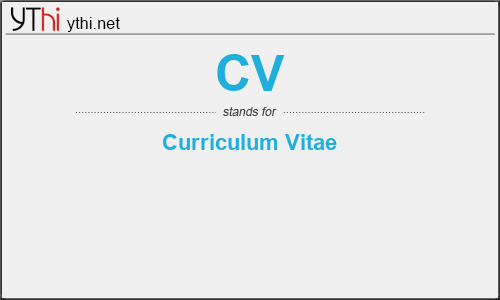What does CV mean? What is the full form of CV?
The full form of CV is Curriculum Vitae.
A curriculum vitae (CV) provides a summary of your experience and skills. Typically, CVs for entry-level candidates are longer than resumes—at least two or three pages. CVs for mid-level candidates who have amassed numerous publications tend to run much longer.
CVs are lengthier than resumes and include more information, particularly details related to one’s academic and research background.3
A curriculum vitae summary is a one-to-two-page, condensed version of a full curriculum vitae. A CV summary is a way to quickly and concisely convey one’s skills and qualifications. Sometimes large organizations will initially ask for a one-page CV summary when they expect a large pool of applicants.
When to Use a CV Instead of a Resume
In the United States, a curriculum vitae is used when applying for academic, education, scientific, or research positions. A curriculum vitae can also be used to apply for fellowships or grants. In Europe, the Middle East, Africa, or Asia, employers may expect to receive a curriculum vitae rather than a resume.
A curriculum vitae, commonly referred to as a “CV,” is a longer (two or more pages), more detailed synopsis than a resume. There are also differences in what is included, and when each document is used.
While your CV should be specific to your background and tailor to the job for which you’re applying, there are several steps you can take to ensure you write an effective CV. Most CVs include the following information:
- Contact information
- Academic history
- Professional experience
- Qualifications and skills
- Awards and honors
- Publications
- Professional associations
- Grants and fellowships
- Licenses and certificates
- Volunteer work
- Personal information (optional)
- Hobbies and interests (optional)


Leave a Reply
You must be logged in to post a comment.